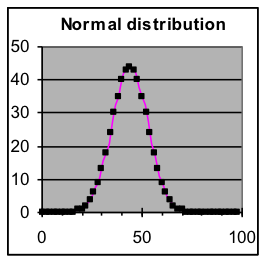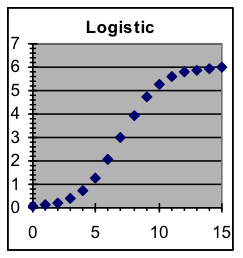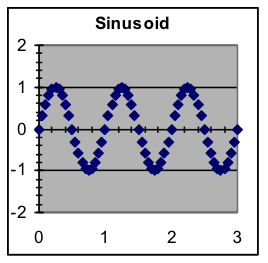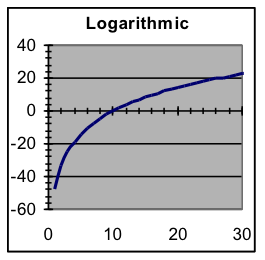26.1: N1.01- Overview
- Page ID
- 51760
Topic N. Additional Useful Modeling Formulas
Objectives:
- Be able to use and understand the parameters of normal, logistic, and sinusoidal models.
- Be able to use logarithmic models to make inverse models for exponential data.
- Be able to select appropriate models based on the nature of the process producing measurements.
Overview
Additional useful modeling formulas:
While there are a great many types of mathematical functions that could be used for modeling in addition to the types discussed previously (constant, linear, quadratic, exponential, and power-function), three more types are particularly useful in practical applications: normal, logistic, and sinusoidal.
Normal models produce the “bell-shaped curve” graph that usually is a good fit to the distribution of some characteristic around its average value for a population (e.g., the distribution of adult heights). Normal models are particularly relevant to measurement because the distribution of noise values usually follows such a model. The parameters we will use for normal curves are the population size, the average value, and the width of the peak.
Logistic models describe a smooth transition from one steady value to a different steady value (e.g., the temperature of water coming from the hot water faucet when the heater is far from the faucet). A process that shows exponential growth at some times must eventually level off—a logistic model can often be used to describe the entire process in such a case. The parameters of a logistic model are the starting and ending output values, the center (the input value at which the output is halfway between the two limits), and the rate of change at the center.
Sinusoidal models (based on the sine function discussed in the trigonometric topics) can be used to describe a great many processes that involve waves, vibrations, or rotation. This is the only model we will discuss that has a repeating pattern, and most repeating pattern in nature match some sinusoidal model. The parameters for a sinusoid are its wavelength (how often the pattern repeats), its baseline (the average output value over a full wavelength), its amplitude (how far output varies above and below the average), and its phase (the relative position of the peaks and valleys).
We will examine one additional type of model, even though it is used less often. Logarithmic models are the inverse of exponential models, and are thus appropriate in situations where equal-percentage changes of the input variable result in equal-amount changes of the output variable. The parameters used for a logarithmic model are closely related to those for the corresponding exponential model that would apply if x and y columns were exchanged: growth rate (or decay rate, if negative) and an x-intercept value (which would be the y-intercept value in an exponential model).
| Illustrative graphs of the additional models discussed in this topic | |||
 |  |  |  |

